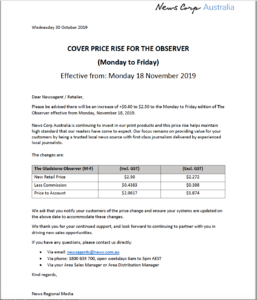Setting your sale price for new inventory items is challenging. There are many factors to consider: margin, what an item will sell for, your sales volume need, the labour cost of each sale and more.
In considering what to sell something for, ask your colleagues in-store how much would you pay for this? This can be a good guide, or at least a data point to add to your thinking.
Do your research, too, and see what others nearby sell the item or similar items for. Research online too, locally and elsewhere.
Finally, consider carefully your objectives for the product – is this a volume play or a margin play?
Your pricing choice may not be as clear-cut as it would seem. For example, you could set a high price knowing that with a discount voucher on purchase the item appears to cost less. You might have volume pricing: $xx.xx for one, $yy.yy for two. You could have the item bundled with another to differentiate your offer to that of a nearby competitor and thereby offering you the opportunity to break free on pricing.
Pricing is not black and white. Indeed, it plays to your advantage if it is not black and while as this makes price comparison more difficult, which is good for you. Zee my other notes on discount vouchers and multi-buy pricing.
Think carefully about where in a price band you price an item. For example, Items priced above $7.99 could probably sell at $9.99. Items above $19.99 should either be $24.99 or $29.99 and no other number in between. Above $29.99 more often you should target $39.99.
Avoid nothing prices that can cost GP. For example: $21.95 should be $24.99; $112.50 à$119.99; $6.50 à$7.99; $8.75 à$9.99; $132.50 à$139.99; $36.50 à$39.99, and so on.
Choose to go to a higher price point rather than lower. Independent retail businesses, newsagencies especially, are expected to be more expensive. If you counter this with a consistently offered and generous discount voucher program then erring on the higher side of pricing works for you as your voucher sets value perception for your shoppers.
My recommendation is that you always end your prices with a .99 and price at above RRP. I see no value in a .00 price point. Indeed, I see that as an opportunity lost.
Here is what this post is really about: think about and determine the pricing policy you want for your specific business and establish this as a guide for your business. This can make it easier for anyone in the business faced with setting a sale price for new items. Without it, pricing will take longer. Worse, you could make mistakes
 People spending $20 or more at an IGA supermarket are offered a free newspaper.
People spending $20 or more at an IGA supermarket are offered a free newspaper.
